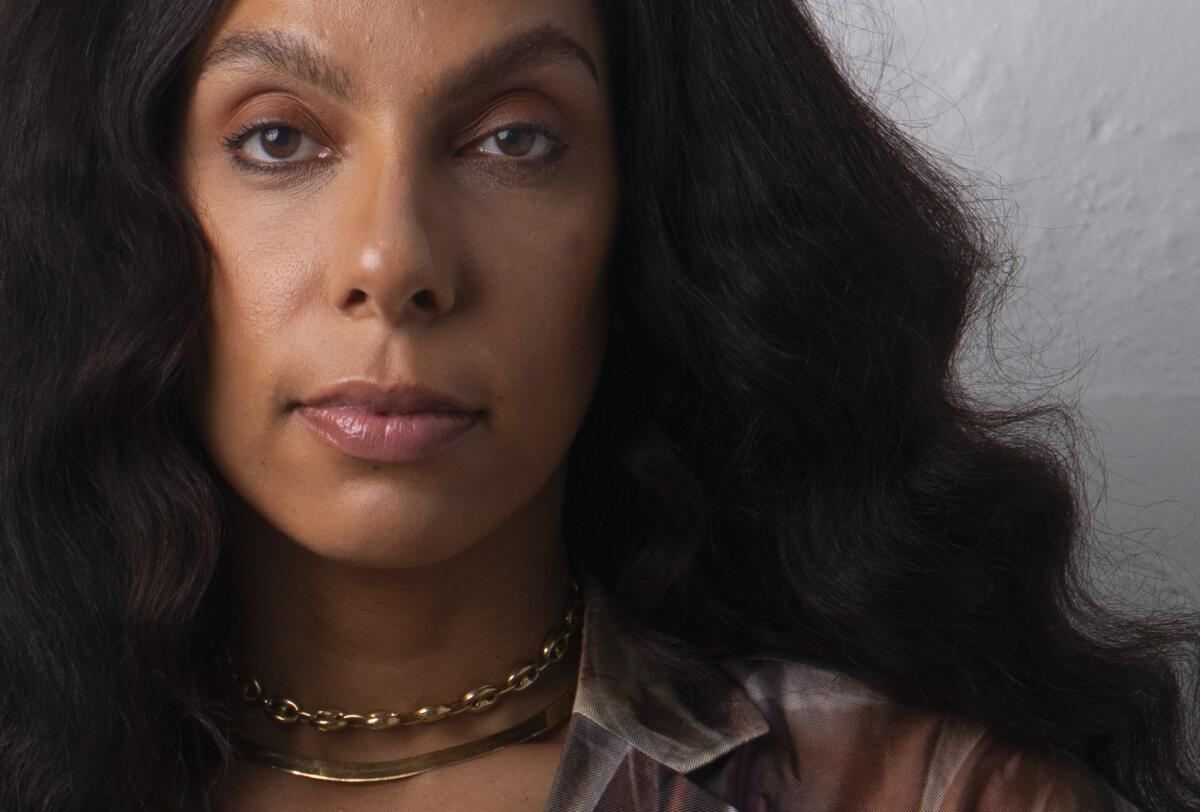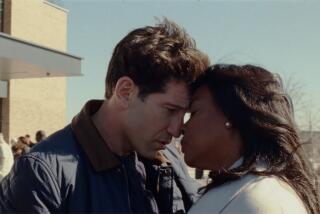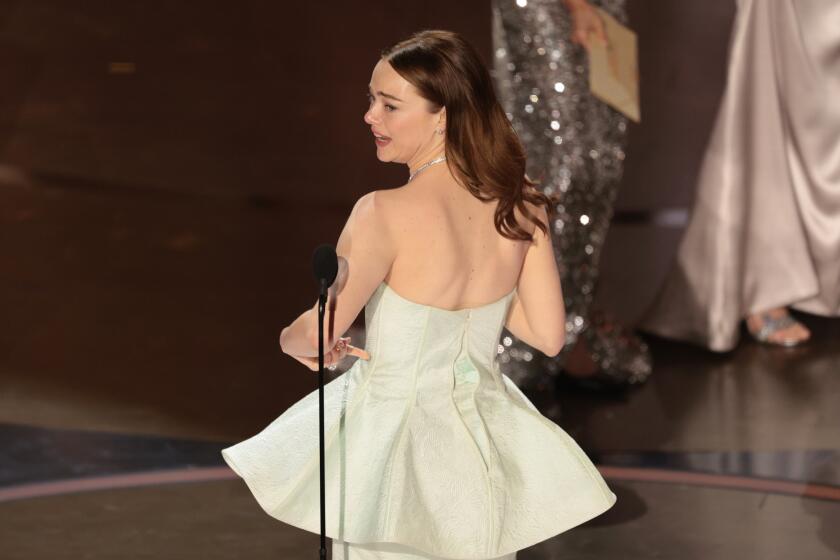‘Queen and Slim’ director Melina Matsoukas protests police brutality with her film

Two years ago, when director Melina Matsoukas and actress-writer Lena Waithe were working on the acclaimed “Thanksgiving” episode of the Netflix series “Master of None,” they knew they wanted to collaborate again. So when Waithe told the director that she was writing her first movie, Matsoukas said she’d be happy to look at her script but didn’t promise to direct it right away.
“Lena is my work soul sister, and we have a beautiful relationship that is full of trust on both sides,” Matsoukas says. “After I read her script, I knew instantly that I wanted it to be my first feature. It was provocative and powerful, and said something important and said it loudly. But it’s also very entertaining and tells a beautiful love story. The fact that it has a broad reach makes it more powerful.”
The result of their collaboration is “Queen and Slim,” which is considered one of the most impressive debut features of the year. The film, set for release next week, showcases unforgettable performances by “Get Out’s” Daniel Kaluuya and newcomer Jodie Turner-Smith as young black people on a first date whose lives are forever changed when a racist white cop pulls them over for a minor traffic infraction.
During the interview, Matsoukas talked about the challenges of shooting such a timely movie and her smooth transition from directing award-winning music videos (including Beyoncé’s “Formation”) to such a gritty, high-profile movie.
You have always been vocal about using your artistic voice to create change. Can you talk a little bit about the importance of making a movie like “Queen & Slim,” which addresses police brutality toward people of color in our country?
The reason I became a filmmaker was to disrupt, create change and create a conversation. We created this film to honor brown and black bodies that were lost by the hands of law enforcement. But we also didn’t want to show black people just as victims. We wanted to see people who are fighting back and represent us in a different way.
This movie aligned with my values as an artist who wants to make protest art. This is my form of activism and fight. I want to be part of that important conversation and hopefully bring change to this world, which is so duly needed. Our goal is to help create empathy for communities of color and the struggles that we go through, and that audiences feel the need to take action and change a lot of the injustices that happen in our world.
“Queen & Slim” is also a road picture where the two leads drive from Cleveland to the Florida Keys. Can you tell us about some of the challenging aspects of shooting that?
We shot the movie in 34 days. We started our shoot in Cleveland: I had shot a Nike commercial there and remembered that it had a great black neighborhood with beautiful architecture. The city’s death penalty law also plays an important part in the story line. In a way, our lead characters are living a reverse slave escape story, going from the North to the South. Cleveland was also the last stop of the underground railroad before Canada, so we had a lot of authentic reasons to shoot there. It was also very cold in Cleveland, and the polar vortex (minus 15 degrees) temperatures really impacted the performances.
We shot the rest in New Orleans and then made it to Mississippi [subbing for the Florida scenes], which was only a two-hour drive away. We saved all the wide shots until the end of the shoot.
Talk about the visual influences of the movie and how your years as a successful music video director impacted your choices.
I wanted to shoot on celluloid because I believe that film has a real soul, and I think digital doesn’t quite translate the same way. I also wanted to capture the landscape’s progression, but shooting on the road takes more time, light and patience. Because of my music video background, I am sensitive to material feeling too stylized. I like to create an authentic world and to show grittiness and darkness in a beautiful way and to highlight black culture.
A lot of my influences are just from traveling around, being in New Orleans, experiencing those juke joints, and seeing those prisoners working in the fields like slaves. The photographs of Birney Imes and Roy DeCarava are a big influence. I also rewatched some of my favorite road movies — “Amores Perros,” “Y Tu Mamá Tambien” and “True Romance” — to figure out how to keep the car scenes interesting. I purposefully stayed away from “Thelma and Louise” and “Bonnie and Clyde,” because there would be too many parallels.
Your cast is also quite interesting since your leads are a British-born actor (Kaluuya) and a model-turned-actress in her first starring role (Turner-Smith) as well as musicians like Sturgill Simpson and Flea and character actors like Chloë Sevigny and Bokeem Woodbine. Can you tell us about how they all came to be in the film?
Daniel was attached to the project from the beginning. I was supposed to meet him for a five-minute coffee and it turned into a five-hour conversation, and I just knew that he was the one to play Slim. For the role of Queen, both Lena and I wanted to create a platform for a new black actress. That opportunity is unfortunately very rare in Hollywood. We wanted someone who was fresh and could hold their own against Daniel.
Our casting director, Carmen Cuba, brought Jodie to us, and I had worked with her before on a video and a commercial. When we brought her in to test, she completely held her own against Daniel, and we knew they would support and empower each other. Carmen brought the rest of the team together, and each one of them was perfect for the roles and wanted to be part of a movie with such a powerful message.
More to Read
Only good movies
Get the Indie Focus newsletter, Mark Olsen's weekly guide to the world of cinema.
You may occasionally receive promotional content from the Los Angeles Times.






